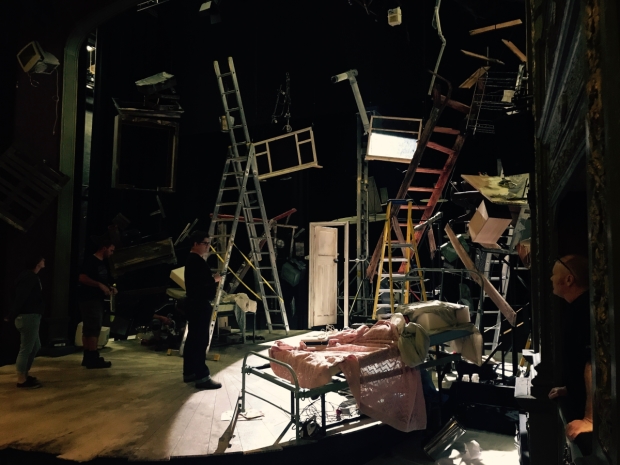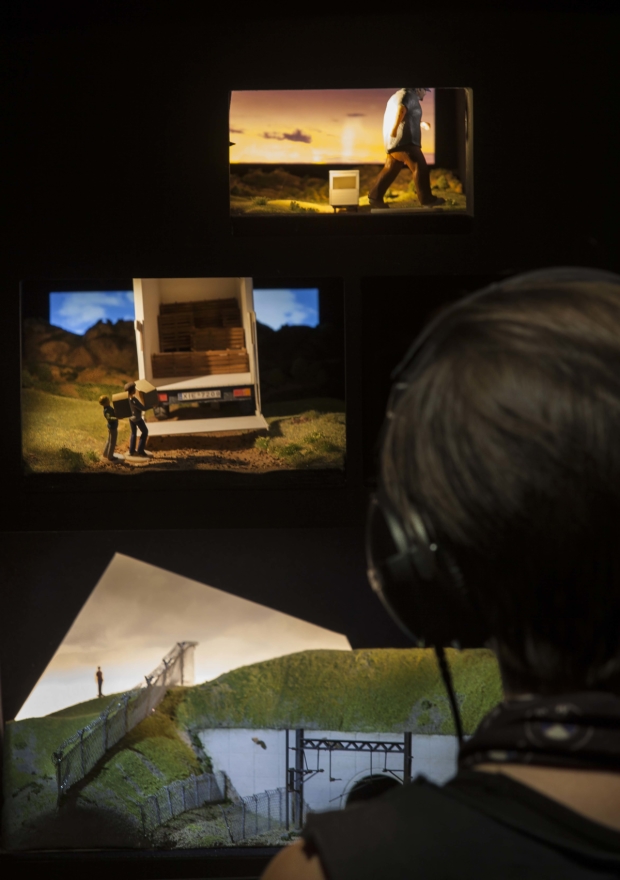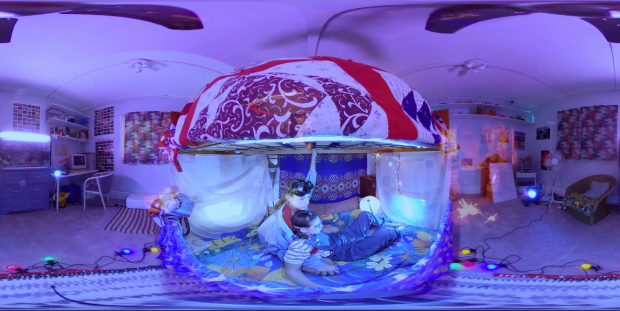Pink saris and violence: How we represent the fight for women's rights on stage

"What would happen if one woman told the truth about her life? The world would split open", this statement by Muriel Rukeyser was the initial inspiration for the design of Pink Sari Revolution.
The piece is set in rural Uttar Pradesh – the badlands of northern India. It is the true story of the "Gulabi Gang" meaning pink gang in Hindi. They are an army of over 400,000 women who wear a uniform of pink saris and fight for human rights under their leader Sampat Pal. It is a place where mythology and caste run deep and women are second-class citizens.
This play takes on the case of a Dalit girl Sheelu, raped by an MP and thrown into jail accused of theft. Sampat and the gang help to free her and put the MP Dwivedi behind bars.
The tree's roots erupt through the concrete, which stands as a metaphor for breaking the system and sexual violence
In the designs, a large bare tree stands in the centre of a concrete platform, covered in dust, surrounded by dirt and set against a graffitied brick wall, emblazoned with an advert for the treatment of impotence against the expansive sky. The tree will not be confined, its roots erupt through the concrete, which stands for both breaking the system and a metaphor for sexual violence.
In February we went to India and followed the gang. One day we came across a rural village with a tree set against the sky in the middle of nowhere, where Sampat gathered the villagers. It was like stepping back in time or walking onto a film set.
How to bring that feeling to the stage was a challenge. Quickly Suba Das, the director, and I realised we couldn’t be naturalistic about it, but needed to embrace 'poor theatre' and a composite set that could be transformed into different locations by the actors in the space. The tree is not only sacred; it is a practical place to meet in the shade and a place traditionally dominated by men. Sampat ignores this tradition and takes over the platform with her gang, teaching woman to be brave and to literally fight with sticks.
Rich and poor live side by side in India and interior spaces bleed into exterior
Music and movement underpin scene changes, like the building of the jail with sections of metal bars, the light creates ominous shadows. A wealthy household is defined by a plastic crate and a beautiful lantern. The colour of props and furniture are very specific so they pop against the dusty broken earth. Rich and poor live side by side in India and interior spaces bleed into exterior, it is this eclecticism that makes it fascinating, visceral and real.
When Sampat takes on a case it is as if she tears it open, symbolised by cracks of light that appear in the platform which spread like a force between the tiles. At the protest moment of the play a massive pink kabuki drop of saris will cover the stage symbolising the gang in its thousands.
This is an incredible story of how the power of one woman can inspire so many.
By Isla Shaw
Pink Sari Revolution runs at Leicester Curve from 27 September to 7 October and then tours to Belgrade Theatre, Coventry (11 to 21 October), Northern Stage, Newcastle (31 October to 4 November and West Yorkshire Playhouse, Leeds (7 to 11 November).













